 W
WAdolf Frederick, or Adolph Frederick was King of Sweden from 1751 until his death. He was the son of Christian August of Holstein-Gottorp, Prince of Eutin, and Albertina Frederica of Baden-Durlach.
 W
WAlexander I was the Emperor of Russia (Tsar) between 1801 and 1825. He was the eldest son of Paul I and Sophie Dorothea of Württemberg. Alexander was the first king of Congress Poland, reigning from 1815 to 1825, as well as the first Russian Grand Duke of Finland, reigning from 1809 to 1825.
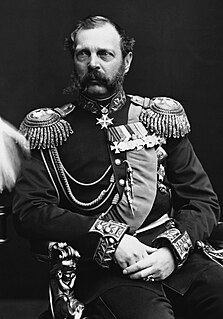 W
WAlexander II was the Emperor of Russia, King of Poland and Grand Duke of Finland from 2 March 1855 until his assassination on 13 March 1881.
 W
WAlexander III was Emperor of Russia, King of Poland and Grand Duke of Finland from 13 March 1881 until his death on 1 November 1894. He was highly reactionary and reversed some of the liberal reforms of his father, Alexander II. Under the influence of Konstantin Pobedonostsev (1827–1907), he opposed any reform that limited his autocratic rule. During his reign, Russia fought no major wars; he was therefore styled "The Peacemaker".
 W
WBirger Jarl, or Birger Magnusson, was a Swedish statesman, Jarl of Sweden and a member of the House of Bjelbo, who played a pivotal role in the consolidation of Sweden. Birger also led the Second Swedish Crusade, which established Swedish rule in Finland. Additionally, he is traditionally attributed to have founded the Swedish capital, Stockholm, around 1250. Birger used the Latin title of Dux Sweorum which in English equals Duke of Sweden, and the design of his coronet combined those used by continental European and English dukes.
 W
WBirger was King of Sweden from 1290 to 1318.
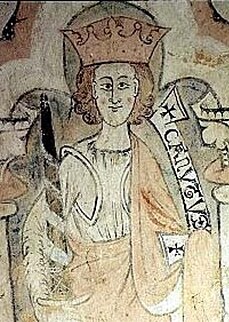 W
WCanute I was king over all of Sweden from 1173 to 1195. He was a son of King Eric the Saint and Queen Christina, who was a granddaughter of the Swedish king Inge the Elder.
 W
WCanute II the Tall, was King of Sweden from 1229 until his death in 1234. He was the father of Holmger Knutsson, a later pretender for the Swedish throne. Both father and son were members of the House of Folkung (Folkungar).
 W
WCharles VII or Carl was ruler of Götaland, and then King of Sweden from c. 1161 to 1167, when he was assassinated.
 W
WCharles VIII of Sweden, Charles I of Norway, also Carl, was king of Sweden and king of Norway (1449–1450).
 W
WCharles IX, also Carl, was King of Sweden from 1604 until his death. He was the youngest son of King Gustav I and his second wife, Margaret Leijonhufvud, brother of Eric XIV and John III, and uncle of Sigismund who was king of both Sweden and Poland. By his father's will he got, by way of appanage, the Duchy of Södermanland, which included the provinces of Närke and Värmland; but he did not come into actual possession of them till after the fall of Eric and the succession to the throne of John in 1568.
 W
WCharles X Gustav, also Carl Gustav, was King of Sweden from 1654 until his death. He was the son of John Casimir, Count Palatine of Zweibrücken-Kleeburg and Catherine of Sweden. After his father's death he also succeeded him as Pfalzgraf. He was married to Hedwig Eleonora of Holstein-Gottorp, who bore his son and successor, Charles XI. Charles X Gustav was the second Wittelsbach king of Sweden after the childless king Christopher of Bavaria (1441–1448) and he was the first king of the Swedish Caroline era, which had its peak during the end of the reign of his son, Charles XI. He led Sweden during the Second Northern War, enlarging the Swedish Empire. By his predecessor Christina, he was considered de facto Duke of Eyland (Öland) before ascending to the Swedish throne.
 W
WCharles XI was King of Sweden from 1660 until his death, in a period of Swedish history known as the Swedish Empire (1611–1718).
 W
WCharles XII, sometimes Carl XII or Carolus Rex, was the King of Sweden from 1697 to 1718. He belonged to the House of Palatinate-Zweibrücken, a branch line of the House of Wittelsbach. Charles was the only surviving son of Charles XI and Ulrika Eleonora the Elder. He assumed power, after a seven-month caretaker government, at the age of fifteen.
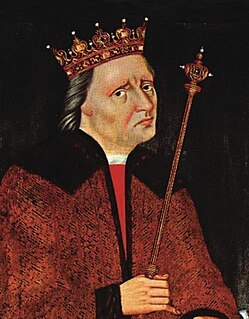 W
WChristian I was a Scandinavian monarch under the Kalmar Union. He was king of Denmark (1448–1481), Norway (1450–1481) and Sweden (1457–1464). From 1460 to 1481, he was also duke of Schleswig and count of Holstein. He was the first king of the House of Oldenburg.
 W
WChristian II was a Scandinavian monarch under the Kalmar Union. He reigned as King of Denmark and Norway from 1513 until 1523 and of Sweden from 1520 until 1521. From 1513 to 1523, he was concurrently Duke of Schleswig and Holstein in joint rule with his uncle Frederick.
 W
WChristina, a member of the House of Vasa, was Queen of Sweden from 1632 until her abdication in 1654. She succeeded her father Gustavus Adolphus upon his death at the Battle of Lützen, but began ruling the Swedish Empire when she reached the age of 18.
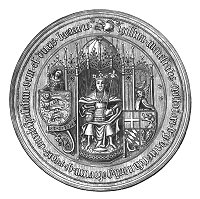 W
WChristopher of Bavaria was King of Denmark, Sweden (1441–48) and Norway (1442–48) during the era of the Kalmar Union.
 W
WEric IX,, also called Eric the Holy, Saint Eric, and Eric the Lawgiver, was a Swedish king in the 12th century, c. 1156–1160. The Roman Martyrology of the Catholic Church names him as a saint memorialized on 18 May. He was the founder of the House of Eric, which ruled Sweden with interruptions from c. 1156 to 1250.
 W
WEric "X" was the King of Sweden between 1208 and 1216. Also known as Eric the Survivor, he was, at his accession to the throne, the only remaining son of King Canute I of Sweden and his queen. The name of his mother is not known, but may have been Cecilia.
 W
WEric "XI" the Lisp and Lame Swedish: Erik Eriksson or Erik läspe och halte; Old Norse: Eiríkr Eiríksson was king of Sweden in 1222–29 and 1234–50. Being the last ruler of the House of Eric, he stood in the shadow of a succession of powerful Jarls, especially his brother-in-law Birger Jarl, whose descendants ruled as kings after his death.
 W
WEric XII was King of Sweden and lord of Scania in 1344–1359. He was a co-ruler with his father, King Magnus IV, from 1356 until his death in 1359.
 W
WEric XIV was King of Sweden from 1560 until he was deposed in 1568. Eric XIV was the oldest son of Gustav I (1496–1560) and Catherine of Saxe-Lauenburg (1513–35). He was also ruler of Estonia, after its conquest by Sweden in 1561.
 W
WEric of Pomerania was the ruler of the Kalmar Union from 1396 until 1439, succeeding his grandaunt, Queen Margaret I. He is numbered Eric III as King of Norway (1389–1442), Eric VII as King of Denmark (1396–1439) and Eric XIII as King of Sweden. Later, in all three countries he became more commonly known as Erik av Pommern, a pejorative intended to point out that he belonged elsewhere. Pomerania is a historic region on the southern shore of the Baltic Sea in Central Europe. Eric was ultimately deposed from all three kingdoms of the union, but in 1449 he inherited one of the partitions of the Duchy of Pomerania and ruled it as duke until his death.
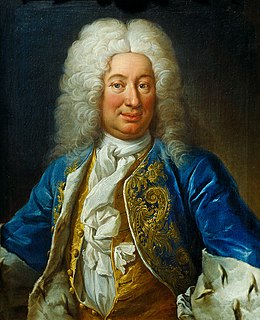 W
WFrederick I was prince consort of Sweden from 1718 to 1720, and King of Sweden from 1720 until his death and also Landgrave of Hesse-Kassel from 1730. He ascended the throne following the death of his brother-in-law absolutist Charles XII in the Great Northern War, and the abdication of his wife, Charles's sister and successor Ulrika Eleonora, after she had to relinquish most powers to the Riksdag of the Estates and thus chose to abdicate. His powerless reign and lack of legitimate heirs of his own saw his family's elimination from the line of succession after the parliamentary government dominated by pro-revanchist Hat Party politicians ventured into a war with Russia, which ended in defeat and the Russian tsarina Elizabeth getting Adolph Frederick of Holstein-Gottorp instated following the death of the king.
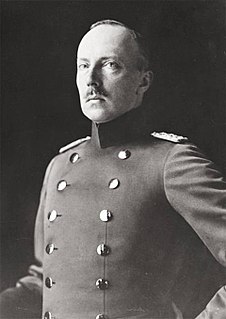 W
WFrederick Charles Louis Constantine, Prince and Landgrave of Hesse, was the brother-in-law of the German Emperor Wilhelm II. He was elected King of Finland on 9 October 1918, but renounced the throne on 14 December 1918. During his brief reign he was known in Finnish as Frederik Kaarle, King of Finland.
 W
WGustav I, born Gustav Eriksson of the Vasa noble family and later known as Gustav Vasa, was King of Sweden from 1523 until his death in 1560, previously self-recognised Protector of the Realm (Riksföreståndare) from 1521, during the ongoing Swedish War of Liberation against King Christian II of Denmark, Norway and Sweden. Gustav rose to lead the rebel movement following the Stockholm Bloodbath, where his father was executed. Gustav's election as king on 6 June 1523 and his triumphant entry into Stockholm eleven days later marked Sweden's final secession from the Kalmar Union.
 W
WGustav IV Adolf or Gustav IV Adolph was King of Sweden from 1792 until he in 1809 was deposed in a coup. He was also the last Swedish monarch to be the ruler of Finland.
 W
WGustav III was King of Sweden from 1771 until his assassination in 1792. He was the eldest son of Adolf Frederick, King of Sweden and Queen Louise Ulrika, and a first cousin of Empress Catherine the Great of Russia by reason of their common descent from Christian August of Holstein-Gottorp, Prince of Eutin, and his wife Albertina Frederica of Baden-Durlach.
 W
WGustavus Adolphus, also known in English as Gustav II Adolf or Gustav II Adolph, was the King of Sweden from 1611 to 1632, and is credited for the rise of Sweden as a great European power. During his reign, Sweden became one of the primary military forces in Europe during the Thirty Years' War, helping to determine the political and religious balance of power in Europe. He was formally and posthumously given the name Gustavus Adolphus the Great by the Riksdag of the Estates in 1634.
 W
WHaakon VI of Norway, also known as Håkan Magnusson, was King of Norway from 1343 until his death and King of Sweden between 1362 and 1364. He is sometimes known as Haakon Magnusson the Younger to distinguish him from his great-grandfather, Haakon V.
 W
WJohn I was a Swedish king elected in 1216.
 W
WJohn III was King of Sweden from 1569 until his death. He was the son of King Gustav I of Sweden and his second wife Margaret Leijonhufvud. He was also, quite autonomously, the ruler of Finland, as Duke John from 1556 to 1563. In 1581 he assumed also the title Grand Prince of Finland. He attained the Swedish throne after a rebellion against his half-brother Eric XIV. He is mainly remembered for his attempts to close the gap between the newly established Lutheran Church of Sweden and the Catholic church.
 W
WJohn was a Scandinavian monarch under the Kalmar Union. He was king of Denmark (1481–1513), Norway (1483–1513) and as John II Sweden (1497–1501). From 1482 to 1513, he was concurrently duke of Schleswig and Holstein in joint rule with his brother Frederick.
 W
WJohn of Sweden, Duke of Östergötland was a Swedish royal dynast. He was titular Duke of Finland 1590–1606 and reigning Duke of Östergötland 1606–18.
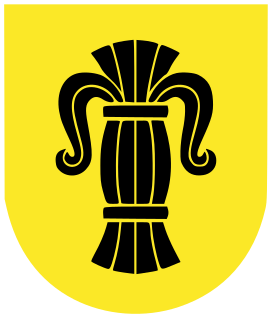 W
WKettil Karlsson (Vasa) was a Swedish clergyman, diplomat, military leader and statesman during the Kalmar Union era. He was a member of the house of Vasa. At age 25, he was elected Bishop of Linköping. He rebelled against King Christian I in 1463, was Captain General (rikshövitsman) and de facto regent of Sweden from February to August 1464, stepping down during the brief return of King Charles Canutesson from exile. After falling out with King Charles, Kettil Karlsson was subsequently elected Lord Protector and Regent (riksföreståndare) of Sweden from 26 December 1464 to his death.
 W
WMagnus III was King of Sweden from 1275 until his death in 1290.
 W
WMagnus IV was King of Sweden from 1319 to 1364, King of Norway as Magnus VII from 1319 to 1355, and ruler of Scania from 1332 to 1360. By adversaries he has been called Magnus Smek.
 W
WMargaret I was Queen of Denmark and Norway from 1387 and Queen of Sweden from 1389 until her death, and the founder of the Kalmar Union that joined the Scandinavian kingdoms together for over a century. Margaret was known as a wise, energetic and capable leader, who governed with "farsighted tact and caution," earning the nickname "Semiramis of the North". She was derisively called "King Breechless", one of several derogatory nicknames invented by her rival Albert of Mecklenburg, but was also known by her subjects as "the Lady King", which became widely used in recognition of her capabilities. Knut Gjerset calls her "the first great ruling queen in European history."
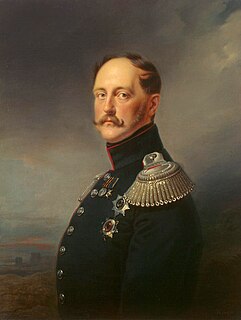 W
WNicholas I reigned as Emperor of Russia from 1825 until 1855. He was also the King of Poland and Grand Duke of Finland. He was the third son of Paul I and younger brother of his predecessor, Alexander I. Nicholas inherited his brother's throne despite the failed Decembrist revolt against him. He is mainly remembered in history as a reactionary whose controversial reign was marked by geographical expansion, economic growth and massive industrialisation on the one hand, and centralisation of administrative policies and repression of dissent on the other. Nicholas had a happy marriage that produced a large family; all of their seven children survived childhood.
 W
WNicholas II or Nikolai II Alexandrovich Romanov, known in the Russian Orthodox Church as Saint Nicholas the Passion-Bearer, was the last Emperor of All Russia, ruling from November 1894 until his abdication in March 1917. During his reign, Russia embarked on a series of reforms including the introduction of civil liberties, literacy programs, state representation, and initiatives to modernize the empire's infrastructure. Ultimately, this progress was undermined by Nicholas's commitment to autocratic rule, oppressive policies pursued by his regime, and crushing defeats sustained by the Russian military in the Russo-Japanese War and World War I. By March 1917, public support for Nicholas collapsed and he was forced to abdicate, thereby ending the Romanov dynasty's 300-year rule of Russia. In the years following his abdication, Nicholas was reviled by Soviet historians and state propaganda as a callous tyrant who persecuted his own people while sending countless soldiers to their deaths in pointless conflicts. More recent assessments have characterized him as a well-intentioned, hardworking ruler who proved incapable of handling the challenges facing his nation.
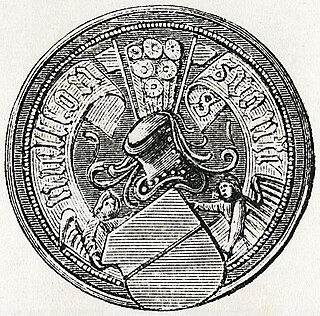 W
WSvante Nilsson was a Swedish nobleman and regent of Sweden from 1504 – 2 January 1512. He was the father of Sten Sture the Younger (1493–1520) who later served as regent of Sweden, during the era of the Kalmar Union.
 W
WBengt Jönsson (Oxenstierna), (1390s–1450s) Swedish statesman and noble. Under the Kalmar Union, he served as co-regent of Sweden, from January to June 1448, together with his brother Nils Jönsson (Oxenstierna). Member of the Privy Council of Sweden from 1435, and magistrate of Uppland in 1439. Dubbed as knight by King Christopher of Bavaria following his coronation in 1441, and Master of the Royal Court from the same year.
 W
WJöns Bengtsson (Oxenstierna), in Latin known as Johannes Benedicti de Salista, was a Swedish clergyman, canon law scholar and statesman, Archbishop of Uppsala (1448–1467). He was Regent of Sweden, under the Kalmar Union, in 1457, shared with Erik Axelsson (Tott), and alone 1465–1466.
 W
WSigismund III Vasa, also known as Sigismund III of Poland, was King of Poland, Grand Duke of Lithuania and monarch of the united Polish–Lithuanian Commonwealth from 1587 to 1632 as well as King of Sweden and Grand Duke of Finland from 1592 until his deposition there in 1599.
 W
WSten Sture the Elder was a Swedish statesman and regent of Sweden 1470–1497 and 1501–1503. As the leader of the victorious Swedish separatist forces against the royal unionist forces during the Battle of Brunkeberg in 1471, he weakened the Kalmar Union considerably and became the effective ruler of Sweden as Lord Regent for most of his remaining life.
 W
WSten Sture the Younger (1493 – 3 February 1520), was a Swedish nobleman who served as the regent of Sweden, during the era of the Kalmar Union.
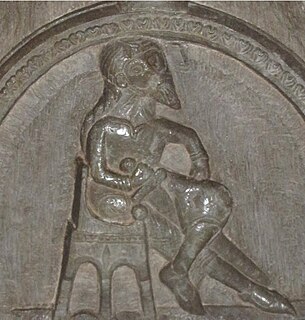 W
WSverker I or Sverker the Elder, murdered 25 December 1156, was King of Sweden from about 1132 till his death. Of non-royal descent, he founded the House of Sverker, the rulers of which alternated with the rival House of Eric over the next century.
 W
WSverker II or Sverker the Younger was King of Sweden from 1195 or 1196 to 1208.
 W
WErik Axelsson (Tott), Dano-Swedish statesman and regent of Sweden under the Kalmar Union; in 1457 jointly with Jöns Bengtsson Oxenstierna and alone 1466–1467.
 W
WUlrika Eleonora or Ulrica Eleanor, known as Ulrika Eleonora the Younger, was Queen of Sweden, reigning in her own right from 5 December 1718 until her abdication on 29 February 1720 in favour of her husband King Frederick, and then as his consort until her death.
 W
WValdemar was King of Sweden from 1250 to 1275.